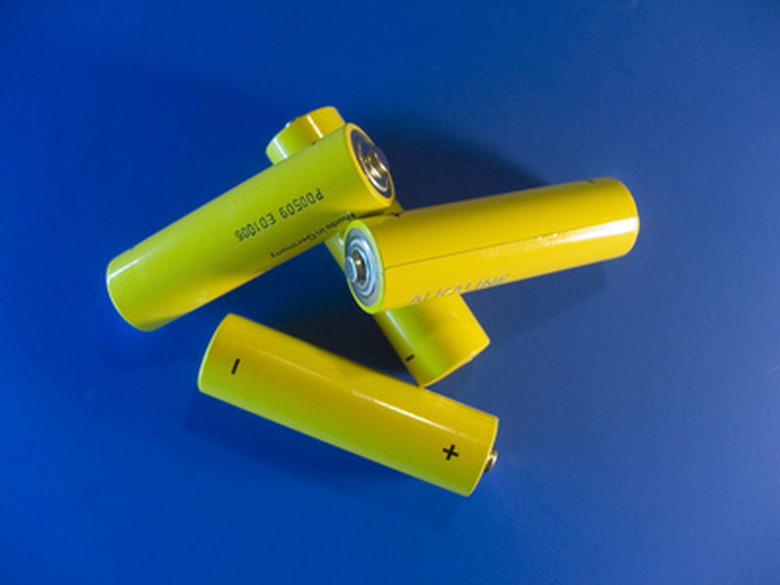How To Test A NiCad Battery
NiCad batteries (also known as NiCd batteries) are batteries that use nickel and cadmium. People use these batteries in everything from remote-controlled airplanes to cell phones. If you're curious about whether the batteries are holding up to their advertised potential or if you just want to check if the NiCad battery you found in a drawer is still good, testing the battery will reveal how well it can operate. This will keep you from being stranded when you need the battery the most.
Basic Voltage Check
Step 1
Set the multimeter to use direct current (DC) voltage. Batteries always produce this voltage type.
Step 2
Touch the red multimeter probe to the positive terminal of the battery.
Step 3
Touch the black multimeter probe to the negative terminal of the battery.
Step 4
Look at the multimeter voltage display. The battery isn't suitable for use if the display shows a number 10 percent or less of the rated battery output.
Testing mAh (Milliampere Hours)
Step 1
Connect the battery to a circuit that will discharge power from the battery. Any device that relies on battery power should form a sufficient circuit when the device is turned on, so you can use items like flashlights, toys, radios and other electronics to drain the battery.
Step 2
Periodically remove the battery from the circuit, and test the battery voltage with a multimeter as described in Section 1 until the voltage per cell drops to 1.
Step 3
Calculate how long it took in minutes to discharge the battery to 1 volt per cell.
Step 4
Multiply the time for discharge (in minutes) by the current in milliamperes.
Step 5
Divide the result from Step 4 by 60 to get the battery capacity in milliampere hours (mAh). This number tells you how long the battery will be operational while connected to a current and therefore is an indicator of performance quality. Higher mAh ratings indicate the potential for better usage, while low mAh ratings indicate that the battery is poor. The mAh rating advertised by battery manufacturers on packaging is an average. Your circuit may produce a higher or lower mAh, depending on how much energy the device draws from the battery. Always test all of your batteries on the same device so that you have a consistent frame of reference.
Things Needed
- Multimeter
- Device that uses battery power (e.g., flashlight)
TL;DR (Too Long; Didn't Read)
The second method described here is very useful in comparing different brands of NiCad batteries that have the same ratings. If you find that one brand consistently has a higher number of mAh than another, you may want to report your findings to consumer reporting agencies.
Cite This Article
MLA
Thibodeaux, Wanda. "How To Test A NiCad Battery" sciencing.com, https://www.sciencing.com/test-nicad-battery-6857292/. 24 April 2017.
APA
Thibodeaux, Wanda. (2017, April 24). How To Test A NiCad Battery. sciencing.com. Retrieved from https://www.sciencing.com/test-nicad-battery-6857292/
Chicago
Thibodeaux, Wanda. How To Test A NiCad Battery last modified March 24, 2022. https://www.sciencing.com/test-nicad-battery-6857292/
